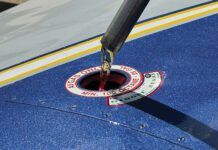When we broke down the 100 most recent P210 accidents, 24 engine/mechanical events topped the list-a rate consistent with other big-bore singles. Of the engine failures, a third were due to improper maintenance, including everything from the wrong bolt torque to use of non-aviation hoses for the turbocharger oil supply and return lines. In that case, the hoses developed numerous leaks, spraying oil throughout the engine room, leading to an inflight fire.
Twenty-one pilots experienced the big silence up front after mismanaging fuel in some fashion. Ten pilots of P210Ns (left/right fuel system) ran one tank dry and either didn’t bother to try to switch tanks to get a restart or were too low to have time before reaching the ground. That’s consistent with accident data that shows the fewest fuel-related accidents are in aircraft with an on/off system or one that can feed both tanks at once.
All save one other pilot simply ran out of fuel for various reasons. A P210R pilot decided that having a both position on his airplanes fuel selector was too simple. On leveling off at cruise in the high teens, he switched to the right tank and left the selector there until the tank ran dry. During the 15-minute glide to an off-airport landing, the pilot did not ever return the fuel selector to both or try any of the steps in the engine failure checklist in the POH.
Experienced 210 pilots know that combination of long fuel tanks and low wing dihedral means that the wings must be level when the airplane is fueled to assure filling both tanks. In addition, the P210R, with its larger capacity tanks, requires some time to let the fuel reach all the nooks and crannies when fueling. There’s an AD requiring a placard calling for allowing two minutes after filling the tanks and then visually checking to assure they are indeed full. It is possible that some of the fuel exhaustion accidents were due to the pilot inadvertently departing with tanks that weren’t full.
One pilot planned a six-hour night flight, leaving virtually no reserve at his destination. Four hours into the VMC conditions trip, the alternator failed. He shut off the master switch-did we mention this was at night?-and pressed on. As he flew over numerous lighted airports, the pilot occasionally turned on the master to check the fuel remaining according to the electrically powered engine monitor. The owner, in the right seat, tried to tell the pilot that the fuel remaining indication wouldn’t be accurate because the engine monitor had been off while the engine was running. The pilot refused to believe the owner. Fuel exhaustion led to a forced landing and wrecked airplane a few miles short of the destination.
Where we expect to see over 20 runway loss of control (RLOC) accidents for nosewheel airplanes in our accident sweeps, the P210 only had seven. We consider that a reflection of good ground manners.
With its clean lines, a P210 will accelerate smartly with the nose down. That was shown in three of the six loss-of-control accidents where the airplanes broke up in flight. In one, the pilot departed with one of two vacuum pumps inoperative. The second failed while in IMC. Even with a standby attitude indicator, the pilot lost control.




